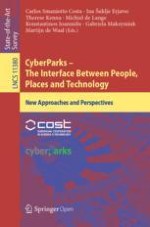
Open Access 2019 | OriginalPaper | Buchkapitel
CyberParks Songs and Stories - Enriching Public Spaces with Localized Culture Heritage Material such as Digitized Songs and Stories
verfasst von : Kåre Synnes, Georgios Artopoulos, Carlos Smaniotto Costa, Marluci Menezes, Gaia Redaelli
Erschienen in: CyberParks – The Interface Between People, Places and Technology
Aktivieren Sie unsere intelligente Suche, um passende Fachinhalte oder Patente zu finden.
Wählen Sie Textabschnitte aus um mit Künstlicher Intelligenz passenden Patente zu finden. powered by
Markieren Sie Textabschnitte, um KI-gestützt weitere passende Inhalte zu finden. powered by